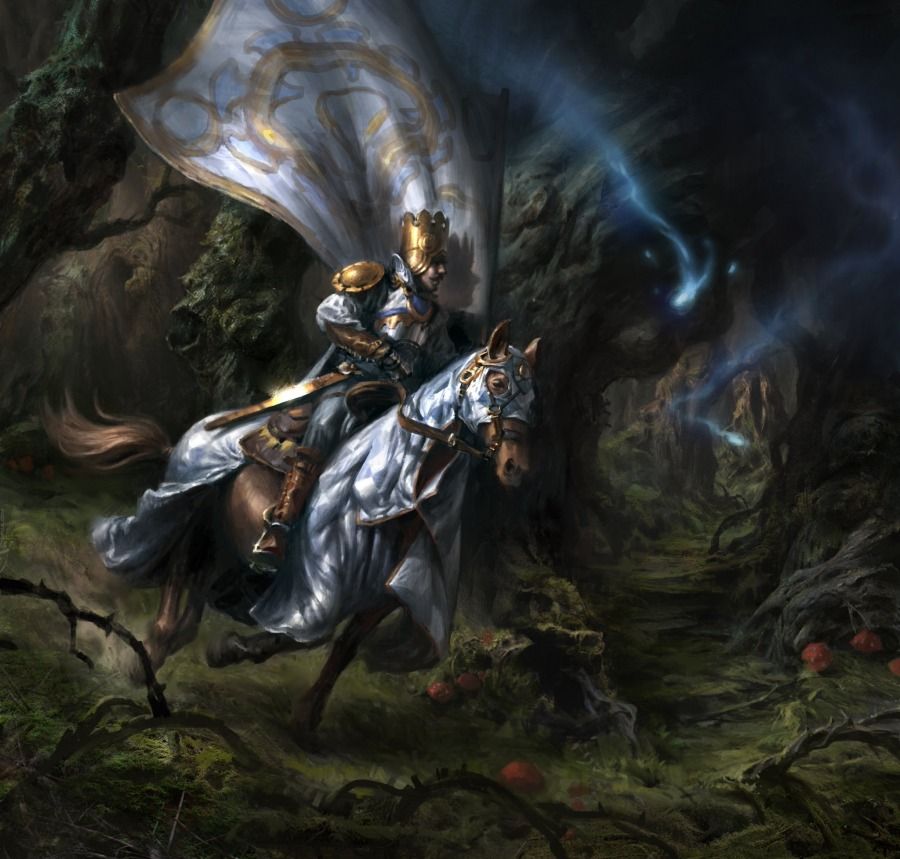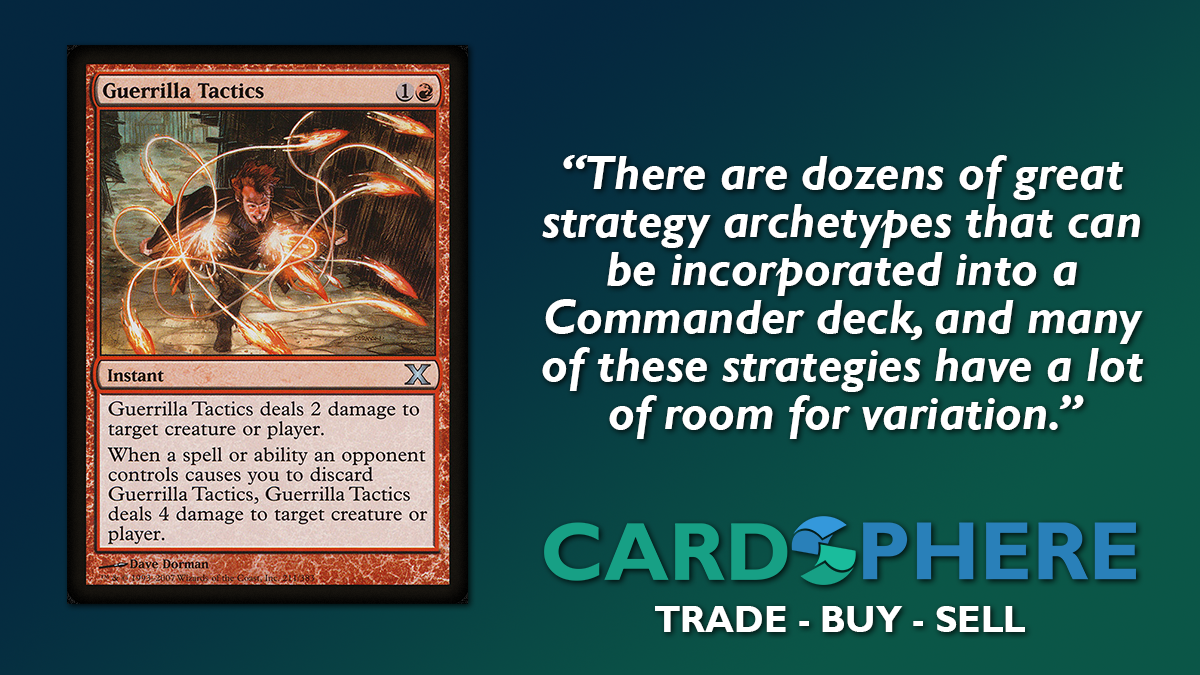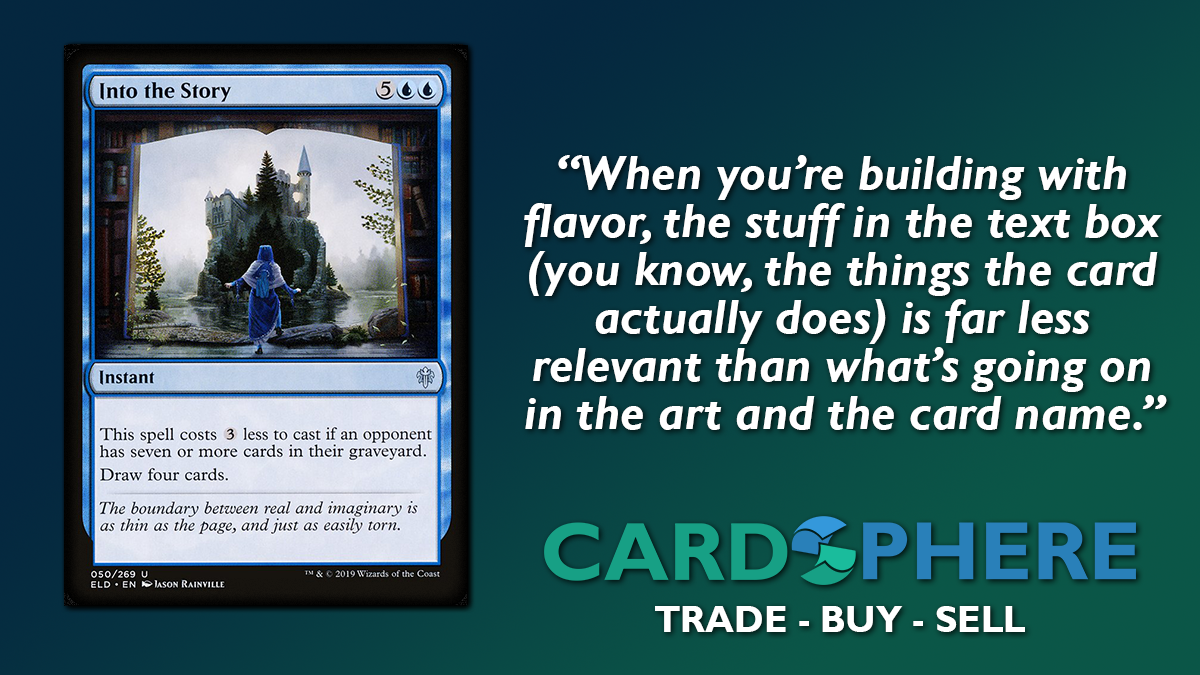Building a Commander Deck - Part One: The Adventure

Hey friends! I hope you’re all doing well and looking forward to everything that Magic has to offer us this year. For me, the biggest thing I’m excited about is Magic Fests hopefully coming back later in the year. I can’t wait to start hanging out with all of you awesome people in person again, and finally meeting some of the great friends I’ve made on-line in the last year. Fingers crossed!
Today, with your permission, I’d like us to embark on a journey together. This article will be the first in a series that will most likely take us a few months to complete. In this series we’re going to take an in-depth look at the theory and craft of how to build a Commander deck. This series is mostly aimed at players who are familiar with the game, but new to the Commander format. But there might also be some benefits for you veterans who are stuck in a rut with your brewing.
We’ll start today at the very beginning. We’re going to ask ourselves the question: How do you begin to brew a Commander deck?
The Top Dog. The Big Cheese. The Head Honcho.
One of the most common approaches to beginning a Commander brew is to start with the commander itself. And with the number of legendary creatures that Wizards has printed in the last few years, you’ll never run out of options with this method. Just ask Cure for the Common Game. He’s a Youtuber who is trying to build a deck for every legal commander. He’s built over 600 decks and still has a long way to go. The 70+ legends we just got in Commander Legends certainly moved the goal posts for him a bit.

With this method, you’ll take whatever legendary creature has caught your eye, and begin to build the deck around it. For a lot of commanders, your path may be pretty obvious. For instance, if you build Anowon, the Ruin Thief, you know you’re going to build a rogue tribal deck. Some commanders might not be so simple. Mangara, the Diplomat, for example, gives you some card draw, but where you go with the deck strategy isn’t so clear cut. You could do white weenie aggro, lifegain, human or cleric tribal, Super-Friends (planeswalkers), or something else entirely.
My Goreclaw, Terror of Qal Sisma deck, for example, is a mono-green stompy deck built with Goreclaw’s cost reduction in mind. Because the cost reduction only works on creatures with power 4 or greater, I focus on those creatures that can get me the most return for my money. For instance, Rhonas the Indomitable only costs 1 green mana with the reduction, and has fantastic stats and abilities with a negligible drawback. So it’s a perfect inclusion.
Big Strategy
Another common method is to start with a strategy that you want to build around. There are dozens of great strategy archetypes that can be incorporated into a Commander deck, and many of these strategies have a lot of room for variation. The “Voltron” strategy is a great example of this. A Voltron deck is one that seeks to eliminate opponents by killing them with one creature (usually your commander since you only need to deal 21 damage with it to kill an opponent). This strategy can be achieved multiple ways, most commonly with equipment, auras, anthems, pump spells, or a combination of any of these. Some great commanders for this strategy are Sram, Senior Edificer, Tuvasa the Sunlit, or Feather, the Redeemed.

Or maybe you’d like to build a “Wheel” deck? In this strategy, the goal is to win by drawing and/or discarding as many cards as possible. Some commanders that are effective with this strategy are Xyris, the Writhing Storm, Niv-Mizzet, Parun, and The Locust God.
You could also build around an alternate win condition. This is any card that has a variation of “you win the game” or “an opponent loses the game” in the text. Some popular cards with alternate win conditions are Biovisionary, Felidar Sovereign, or my favorite, Approach of the Second Sun.
Your strategy could be to win with a “combo”, or combination of cards. Some popular infinite combos are: Exquisite Blood and Sanguine Bond; Kiki-Jiki, Mirror Breaker and Zealous Conscripts; or Dramatic Reversal and Isochron Scepter. Keep in mind, some people in the Commander community frown on combos that can go infinite. So always remember to practice safe Rule Zero (talking with the other people at the table to discuss power levels and what kind of game everyone is looking to have). Also, not all combos have to go infinite. They can just be two or more cards that are more powerful when played together.
Or maybe you’d like your strategy to be based around a keyword mechanic like Landfall with Omnath, Locus of Creation, Proliferate with Atraxa, Praetors’ Voice, Defender with Arcades, the Strategist, or Ninjustu with Yuriko, the Tiger’s Shadow.
Other popular themes to consider are: Super-Friends, tokens, tribal, aristocrats, extra combat, and politics. These are just a few of many that are possible.
Flavor of the Day
So far we’ve looked at the most popular ways to start a deck: the commander and the strategy. If you’re a seasoned Commander player, you’ve definitely built with those two methods. What we’re going to look at next is far less common, but can be just as rewarding, if not more so. And that is “flavor.” Flavor refers to the story, the characters, what we see going on in the art. When you’re building with flavor, the stuff in the text box (you know, the things the card actually does) is far less relevant than what’s going on in the art and the card name.

You could build a deck around a specific planeswalker, like Chandra or Ajani. Or you could look at the art and build with cards that all have a chair, or someone screaming or kneeling. Or you could build a theme deck based around a specific movie or TV show. My friend Mike has a really good Zurgo Helmsmasher deck that is themed around General Grievous from Star Wars.
Or why not build around one of the many planes of existence in the world of Magic? You could build a Niv-Mizzet Reborn deck that only uses cards from Ravnica and focuses on the interactions between the guilds. Or express your love of the ocean with all kinds of sea monsters led by Arixmethes, Slumbering Isle. Or build a deck around the story of the Weatherlight! There’s so much story in Magic’s history, it’ll be a long time before you run out of options.
Alternative Lifestyles
Perhaps you’ve already built many Commander decks and are feeling uninspired. Maybe you’d like to build something that isn’t just your everyday Commander deck. How about a Pauper Commander deck? In Pauper Commander you can have any uncommon rarity creature be your commander, and then the rest of the cards have to be commons. I built a Voltron Pauper Commander deck around Battlewise Hoplite that is a lot of fun to play. Just make sure you’re playing against other Pauper decks, or you’ll probably be a bit overwhelmed.
How about a “gumball” deck? With this style of deck, all of your cards, except for your commander, have to be cards you can get for a quarter or less. This isn’t nearly as bad as it sounds, as there are tons of powerful and cheap cards out there. My friend Lenny has an Urza, Lord High Artificer gumball deck that is an absolute powerhouse.
Or try some other variations. On Scrap Trawlers, we randomly pick a new theme each month to build our decks around. If you’ve got an adventurous playgroup, why not give that a try yourself?
Why Ask Why?
Alright, friends. We’ve gone over many ways that a Commander deck can be conceived, and there are many more out there that I didn’t mention. But what we need to talk about now is Why. Why make a Commander deck?
If you’ve never played Commander before, or even any type of Magic, I want you to know that the Commander variant of Magic is my favorite game. And I’ve played a lot of games! There are countless reasons why this one is my favorite. A big one is the variation. No two games of Commander will ever be the same. Ever. The game keeps expanding as new sets are released, and you'll never run out of new people to play with.
Another reason is that Commander lets me express myself through deckbuilding. Every deck I create, I put a little piece of myself into it. My playstyle, my preferences, my pet cards, and my personality. My decks are an extension of myself as a game player.
There are plenty of other reasons, and I could go on and on. But I’ll skip ahead to the most important reason, and it’s right in the title of the game. The Gathering. Commander isn’t like Modern or Vintage or the other 1v1 formats, where two players are trying to kill each other as quickly as possible. It’s about a group of people getting together and sharing a gaming experience. It’s a journey and an adventure. Not all games of Commander you play will be great. Some might be downright awful. But the ones that are truly great will stick with you. The kind of games that you tell stories about with your friends. For instance, at CommandFest Chicago I was playing my K’rrik, Son of Yawgmoth deck and dwindled my own life total down to 1 while the other 3 players were all still over 30 life. I cast Repay in Kind with Exquisite Blood on the board. Everyone else’s life totals became 1 and mine became 101. And I’ll never forget how awesome that was. So build your own Commander deck, and go have some adventures with it!
More to Come
That’s it for today, my friends. The next installment of this series won’t come for several weeks, as we’ll be directing our attention to Kaldheim for the next couple of articles. But when we do come back, we’ll look at the key components of each Commander deck. We’ll talk about things like ramp, card draw, removal, and protection. We’ll also look at ways to find the best cards for your decks and how to tune them.
Until next time, take care everyone. And play lots of games!
